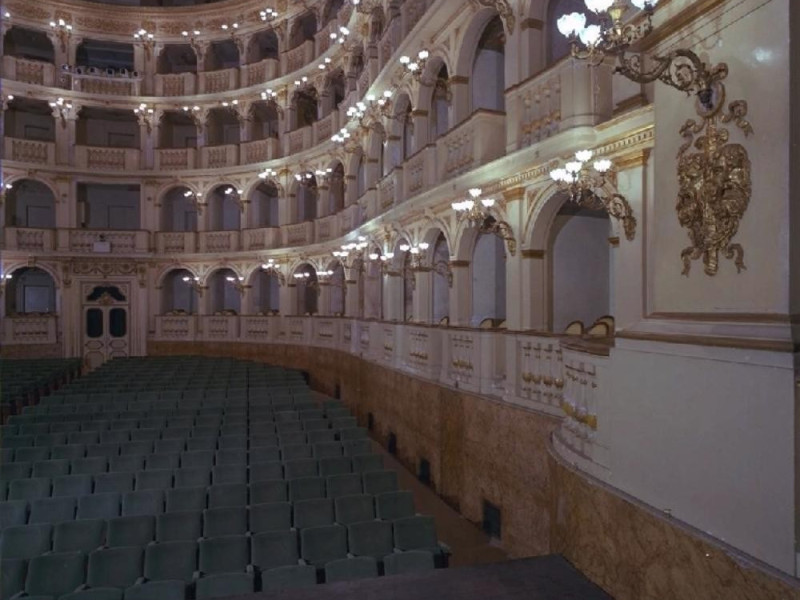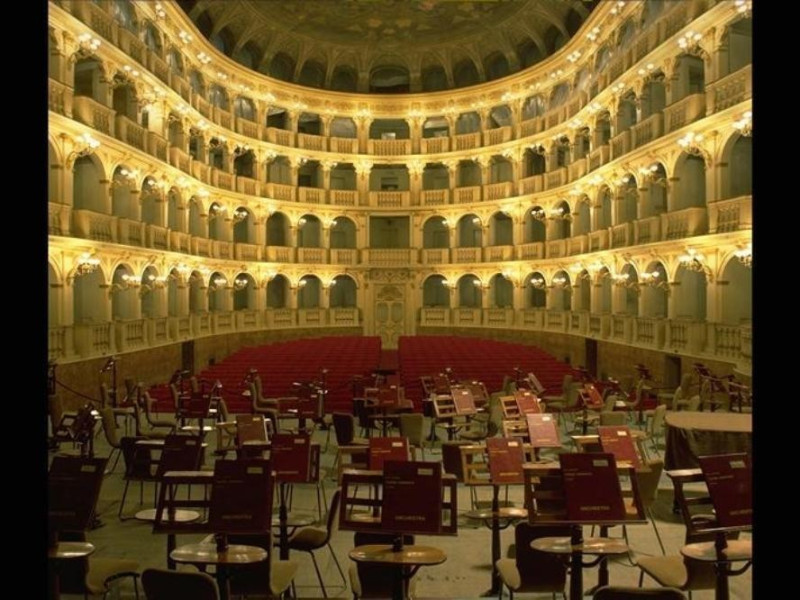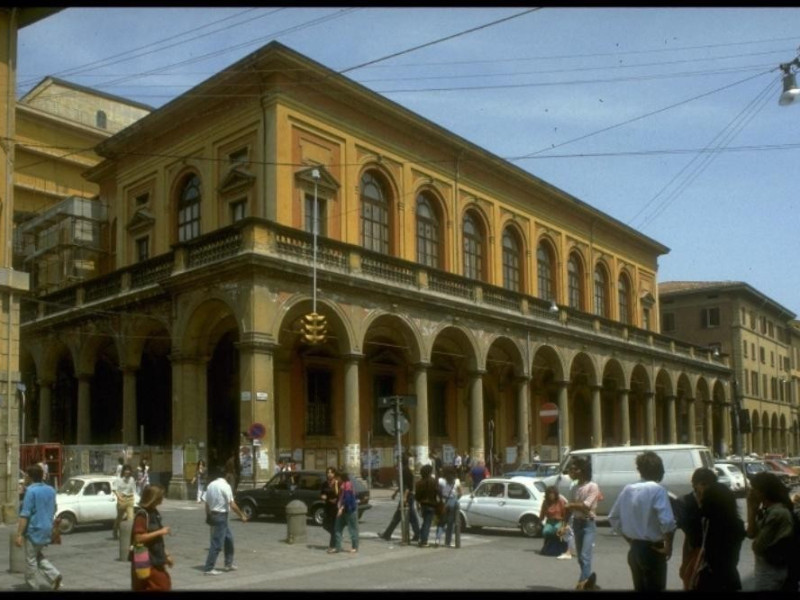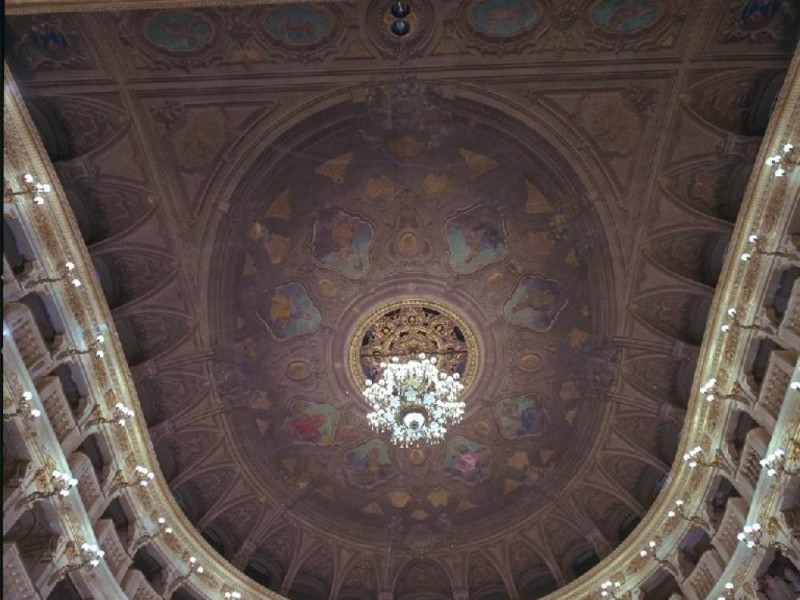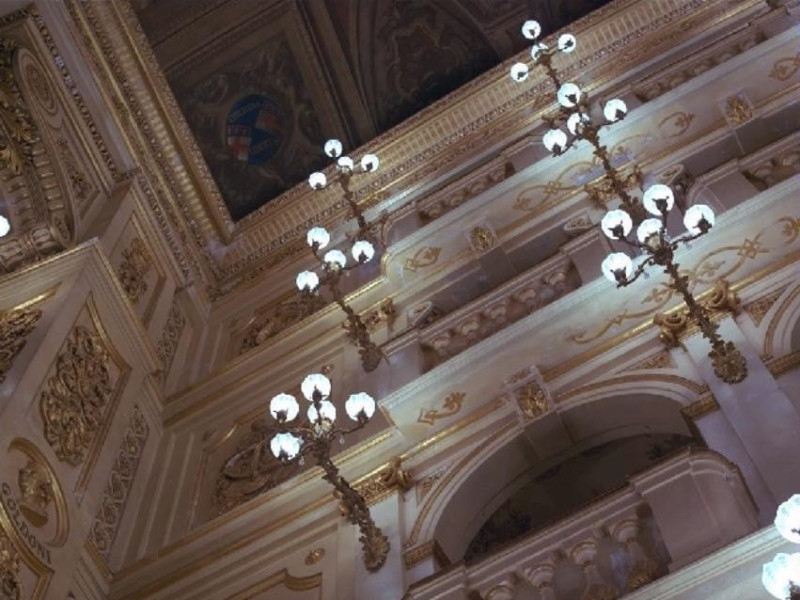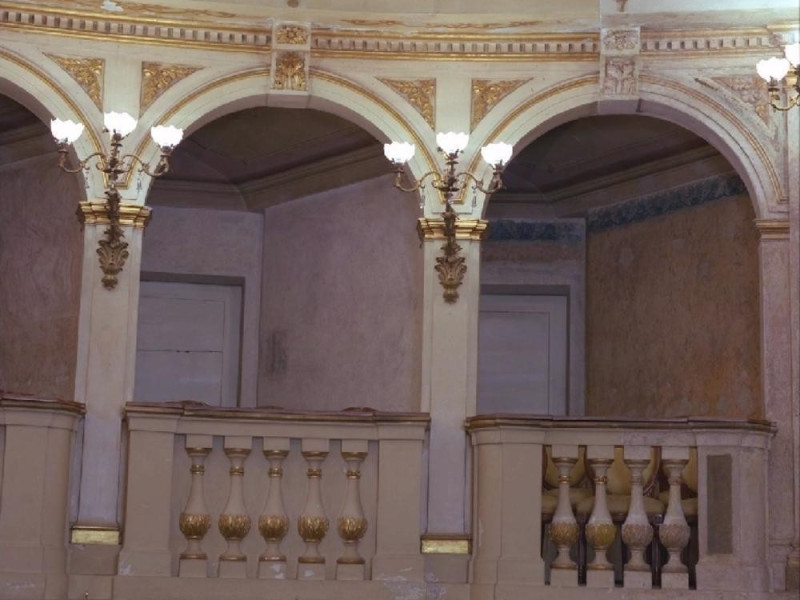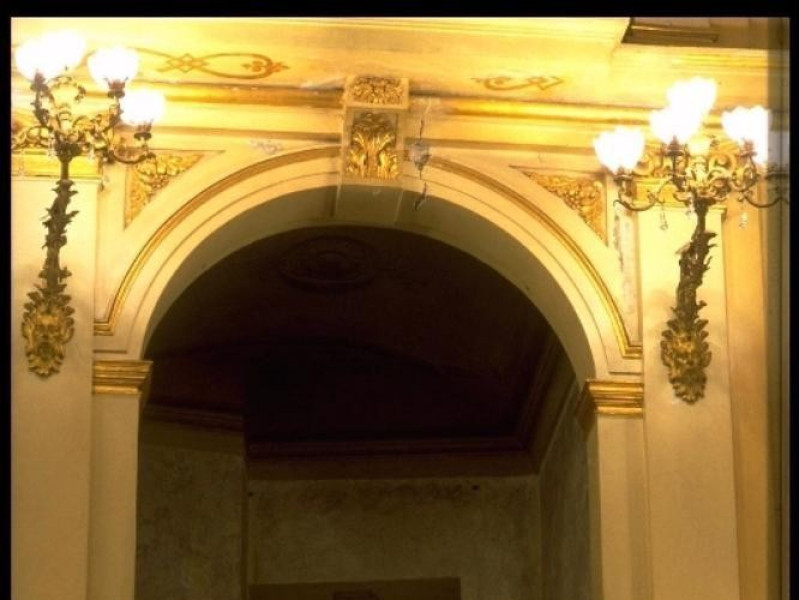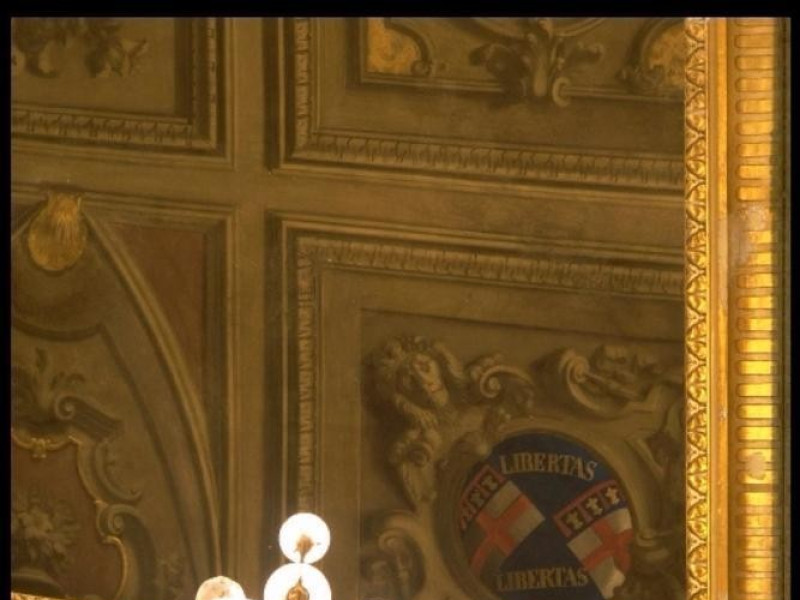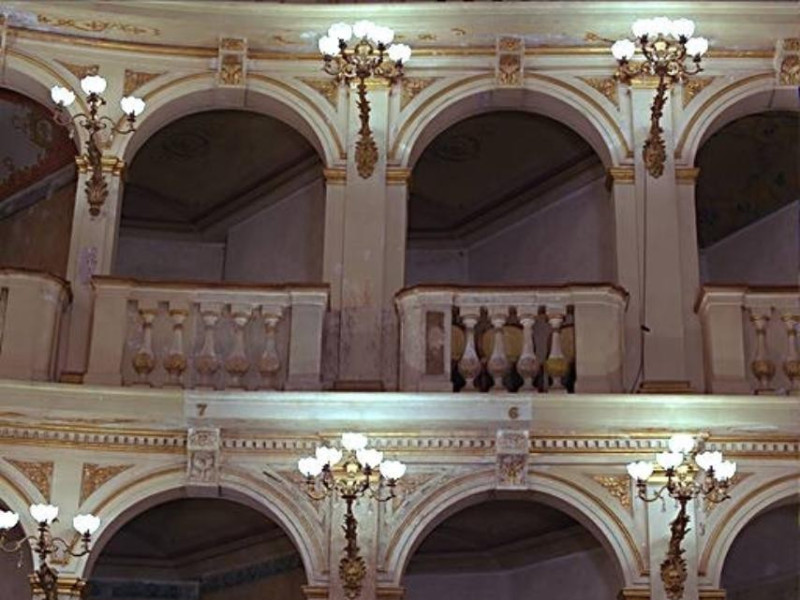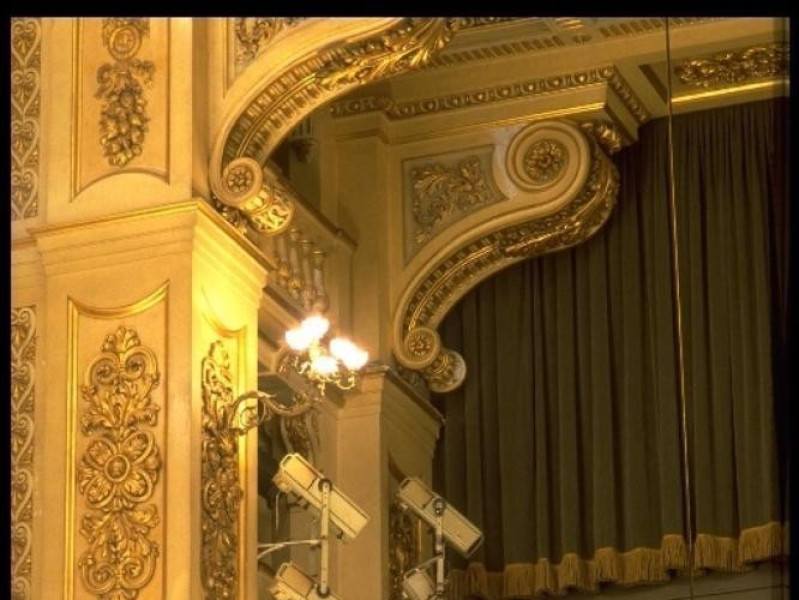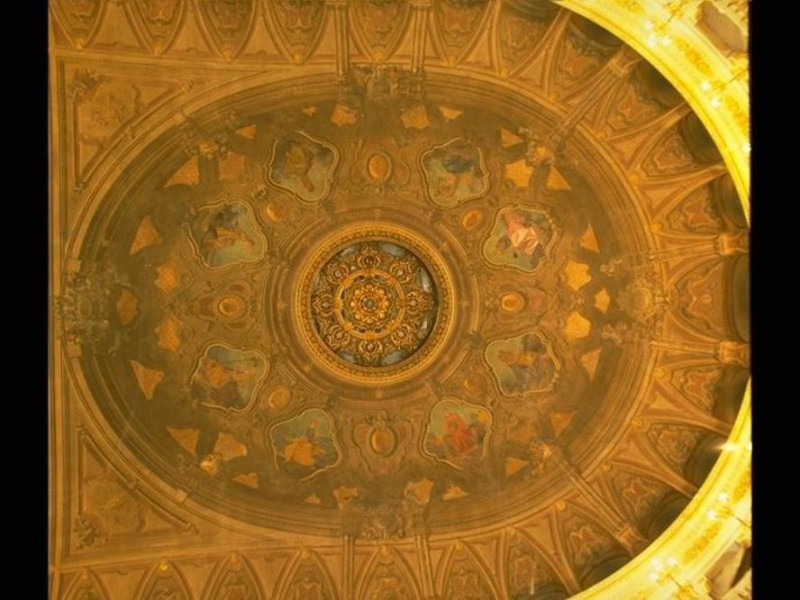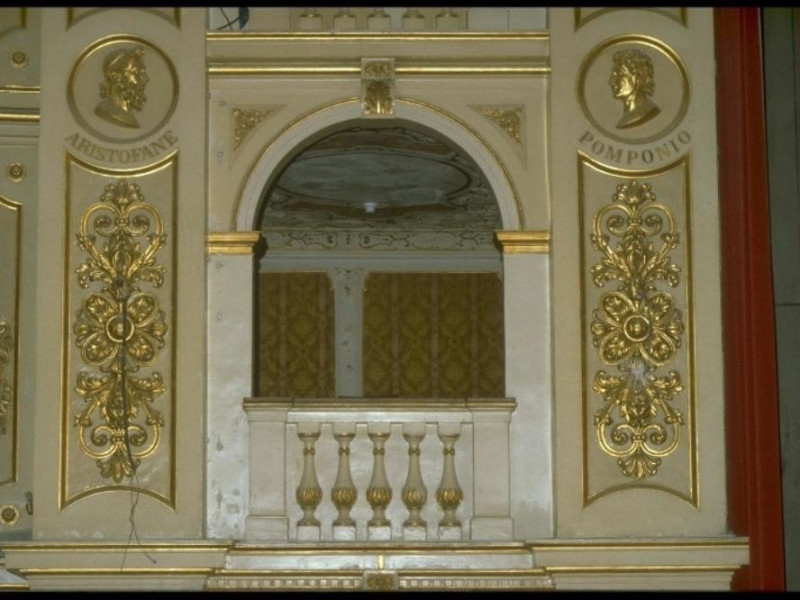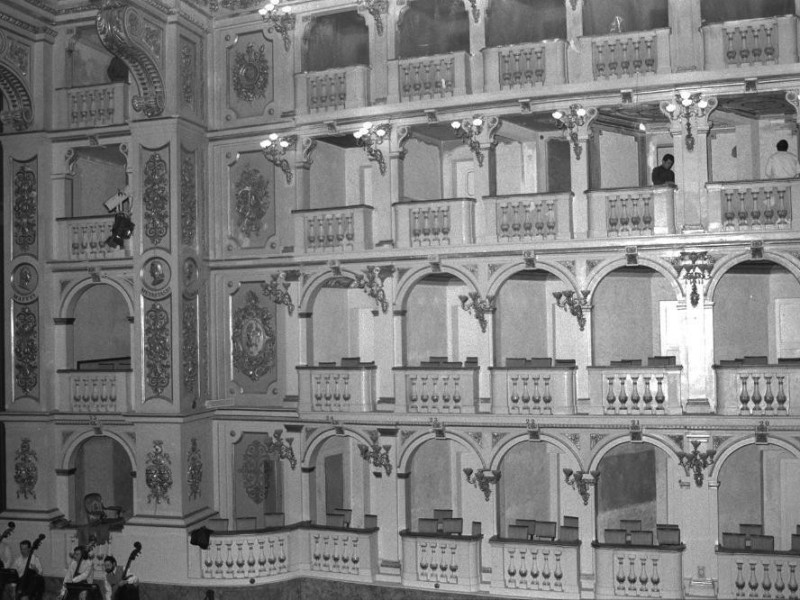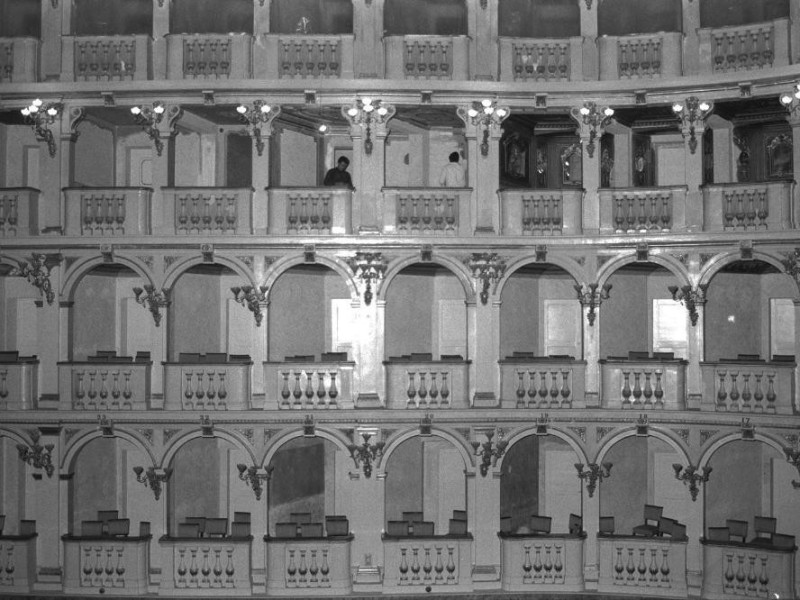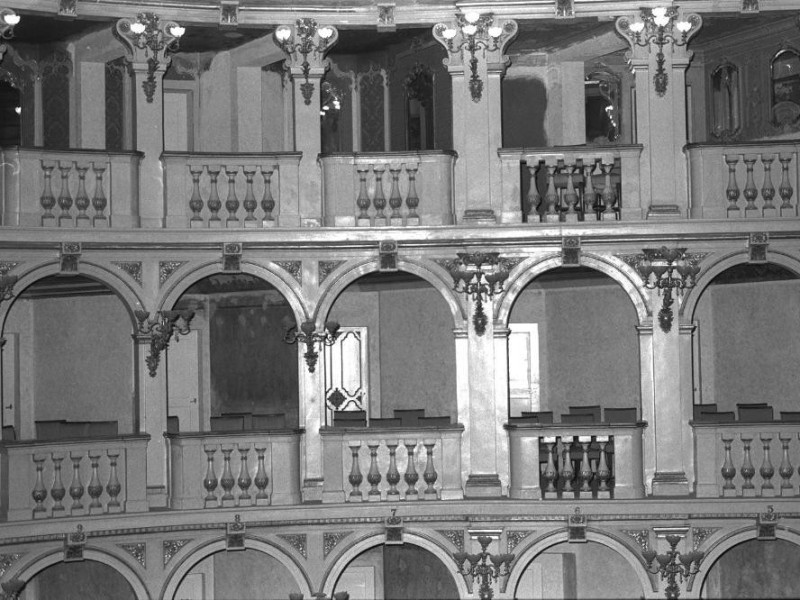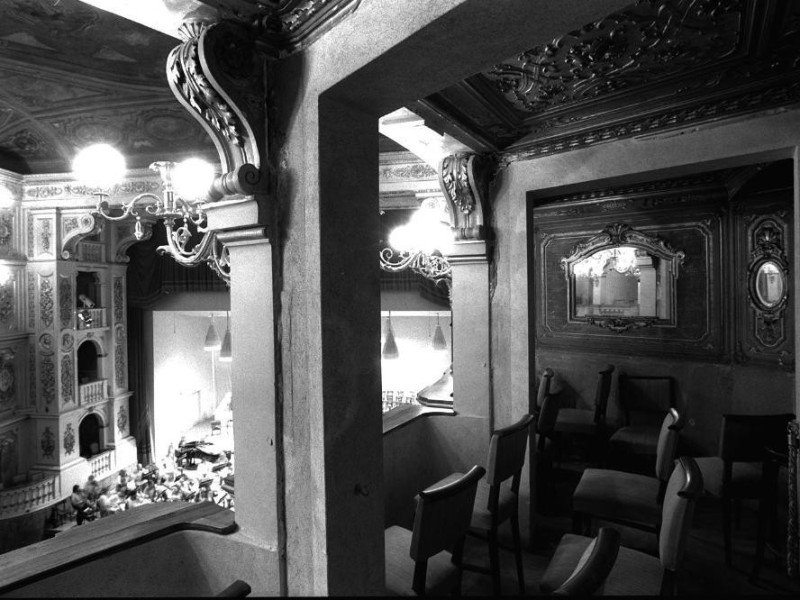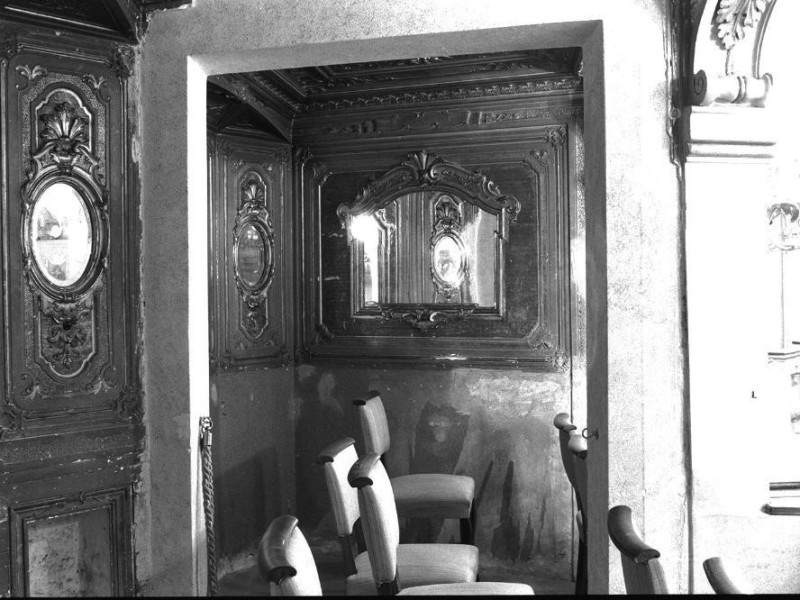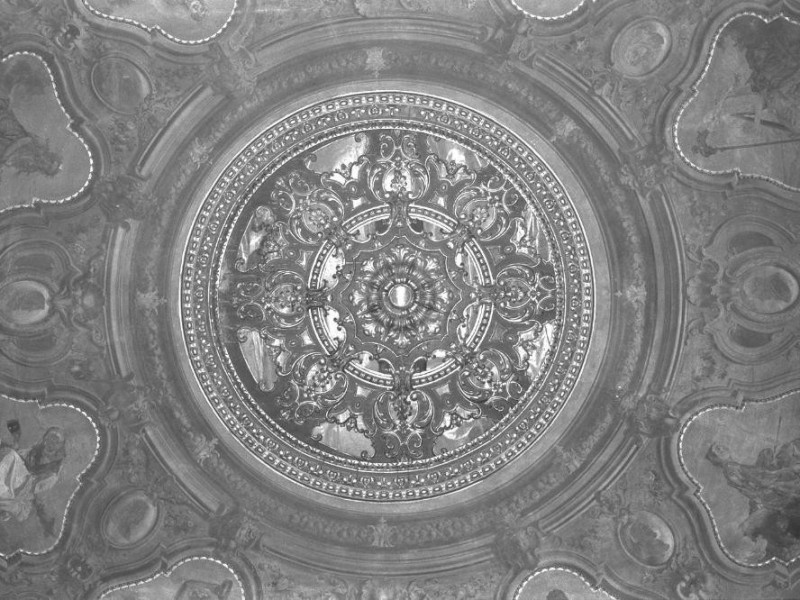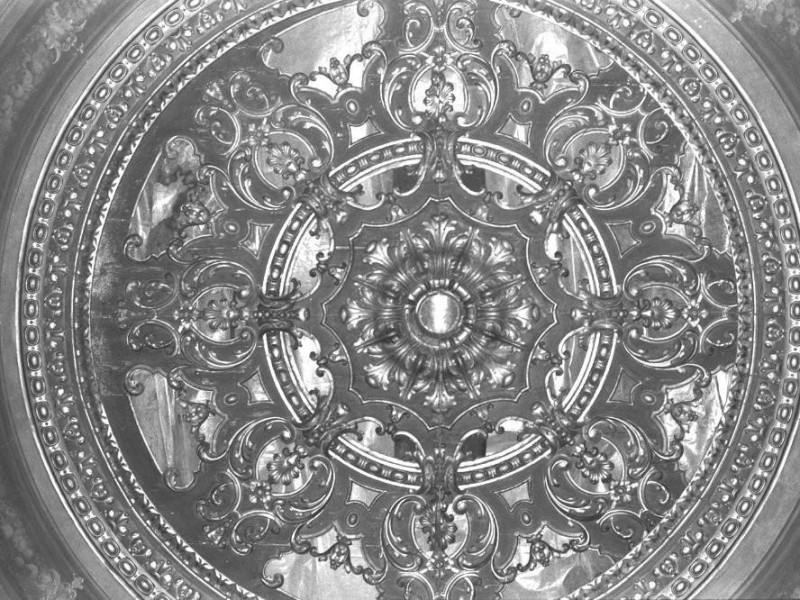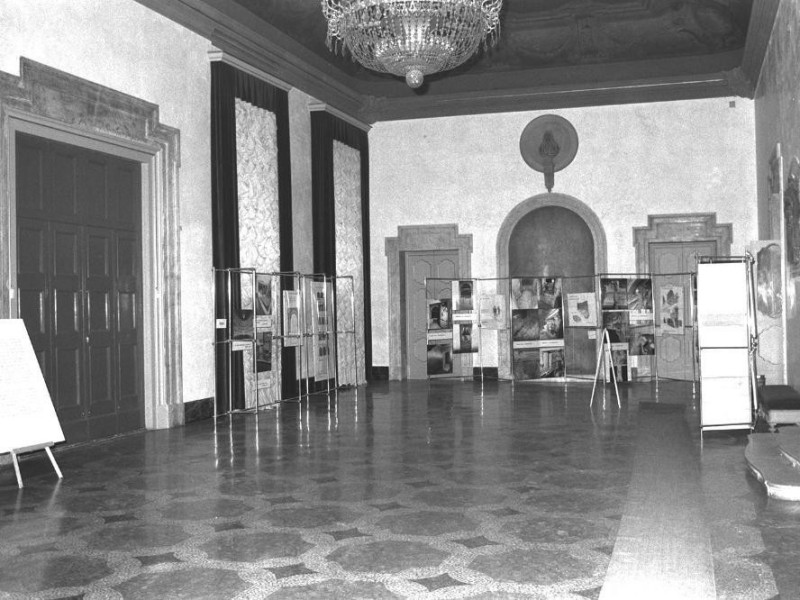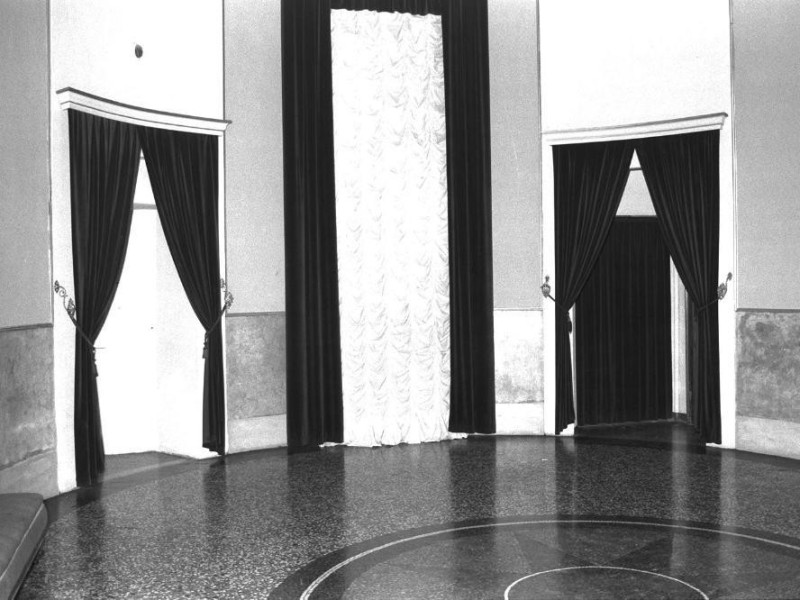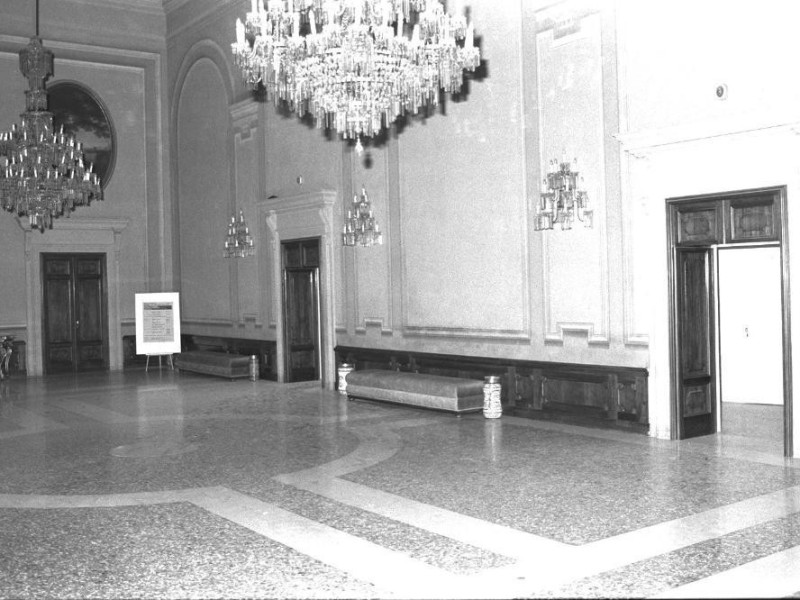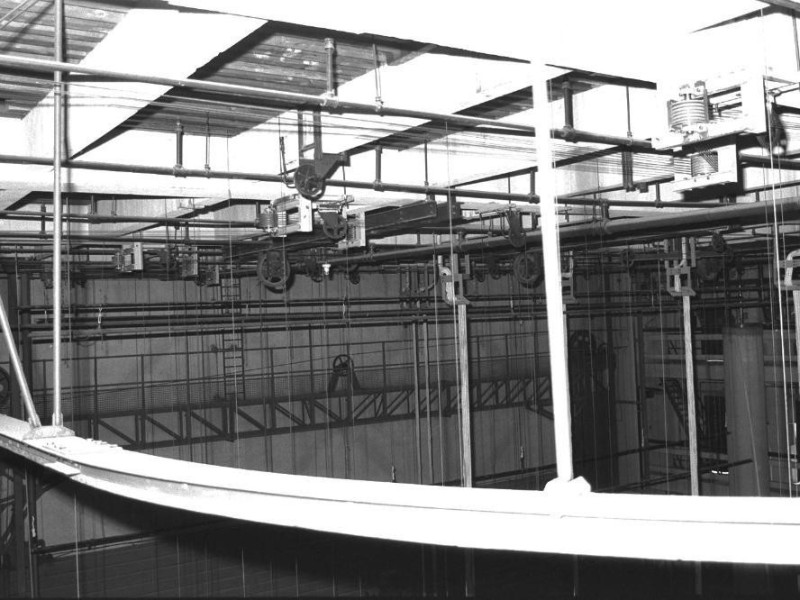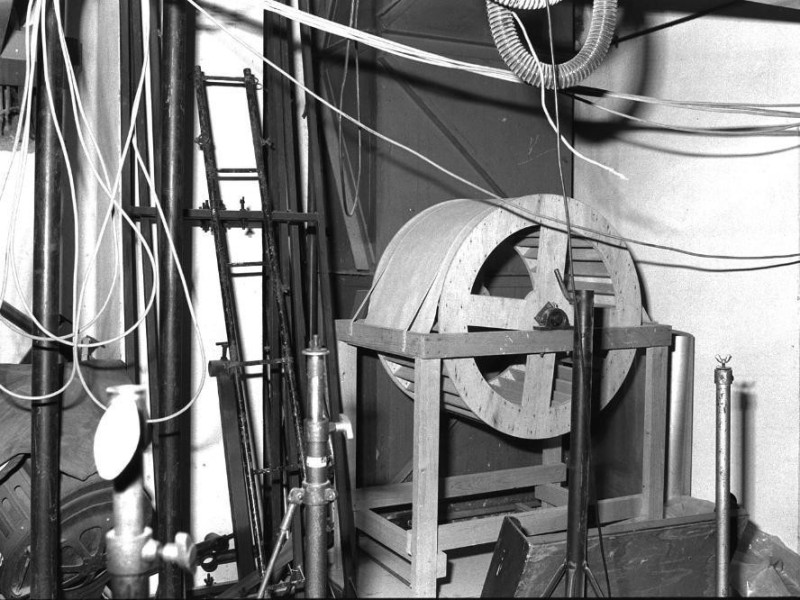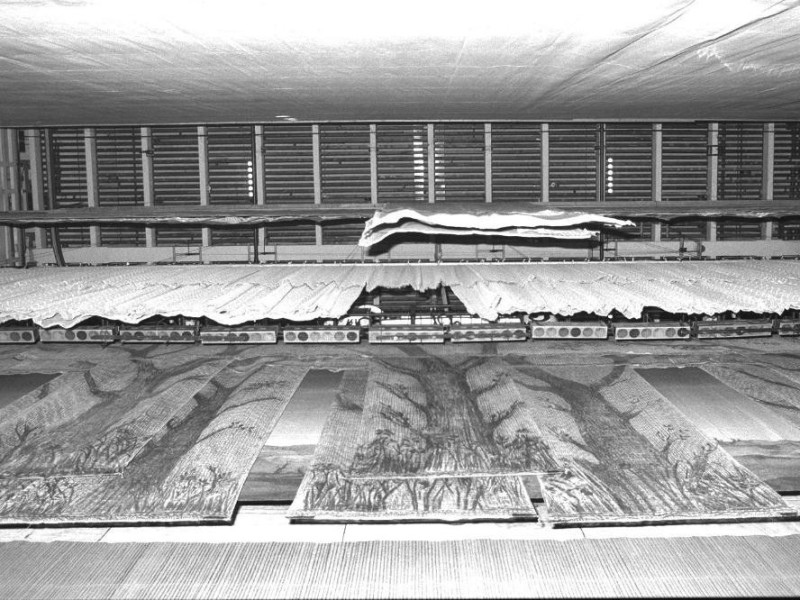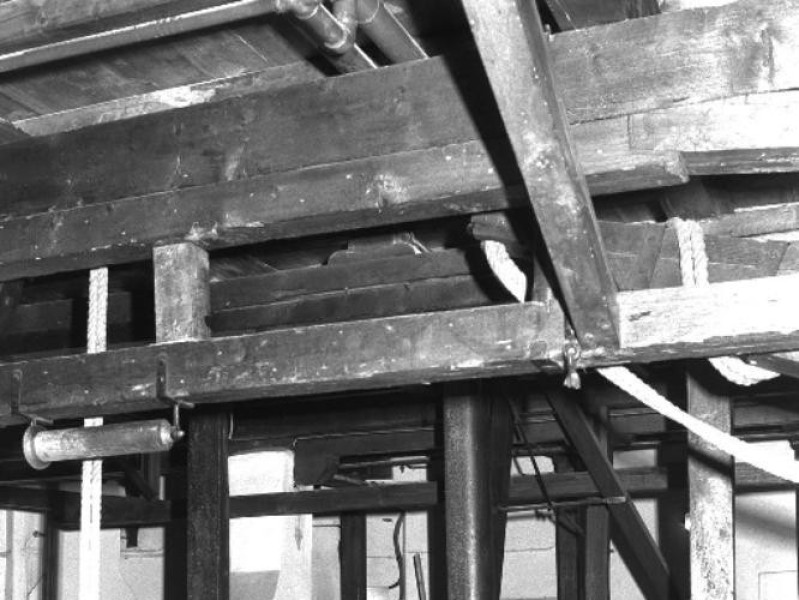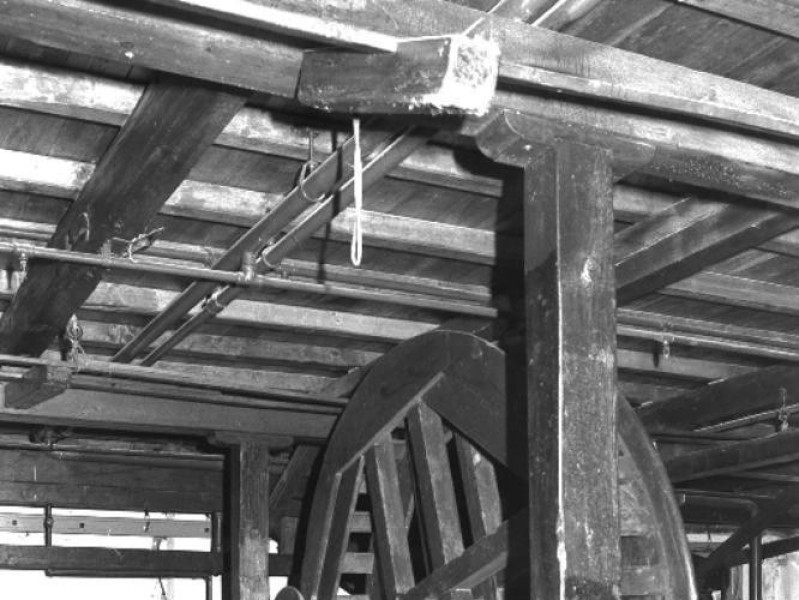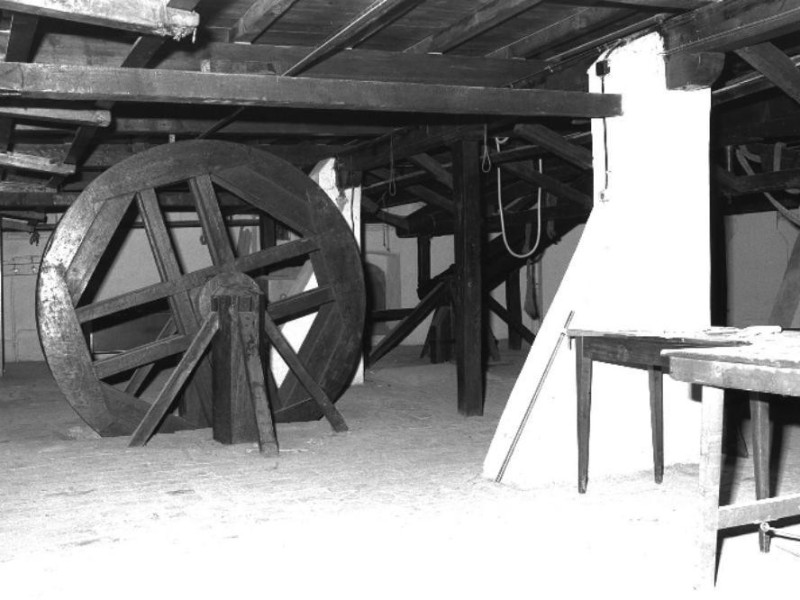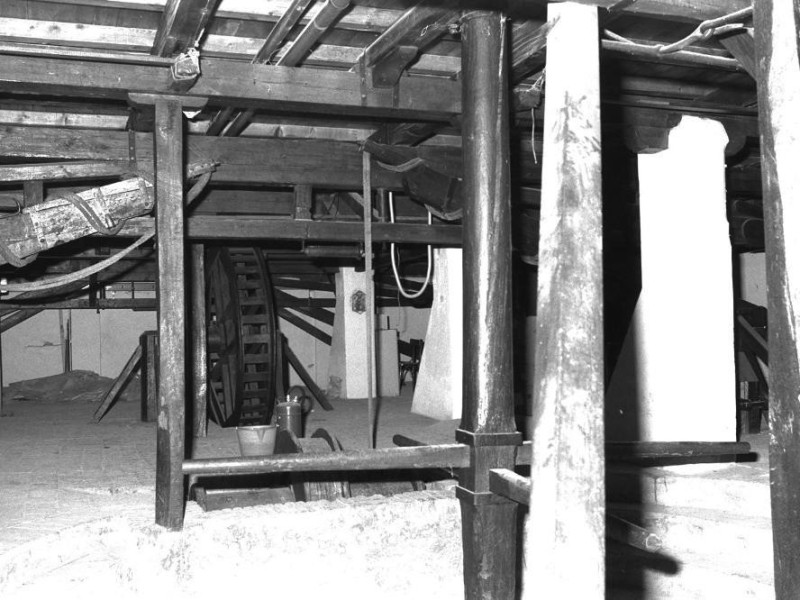Teatro comunale di Bologna
In 1745 the private theater of i House had been destroyed by fire and the public theater of Bologna said "Hall" located in the Palazzo del Podesta's Piazza Maggiore, in urgent need of restoration. So to those given the city was under pressure to build a new building; only in January 1756, however, the Bolognese Senate decreed to entrust the execution of a project for a new theater. He was chosen the famous theatrical engineer Antonio Bibiena. Bibienas since 1754 had offered his own candidacy for the Senate but not held in the account if not two years later when he became a member of the Accademia Clementina for its high merits of designer and architect. It was probably the same as that proposed in the Senate Antonio Bibienas to build the new theater in the street San Donato (now Via Zamboni) where once stood the fabled Palace of Bentivoglio three centuries earlier had housed one of the finest courts of Europe. In facing the current piazza Verdi, occupied by the remains of the Palace and its famous gardens, destroyed 'by popular demand' in 1507 when the family was expelled from the city, the new foundations were laid in the spring of 1756. Antonio Bibienas had assumed the direction of the works foreman assisted by Michelangelo Galletti. They were raising the walls when Bibienas "Galletti objected to the safety of the plant" (Bergamini 1981, p. 3). The issue was not just to Bibienas and was asked to explain and motivate the reasons for its peremptory opposition. Lagging work without being able to find a solution, then the assumptions of House resolved to ask Bibienas to build a model of the elevation of the plant and that they might be subjected to public scrutiny of citizens. The most influential citizens saw themselves personally involved and a fierce and lively controversy. Intervened against Bibienas major Bolognese architects such as Dotti, Torreggiani and scientists like Gabriel Manfredi and Eustachio Zanotti. It 'been stated that "disputes were [due] in part to personal jealousies and enmities, but they were also eminently ideal and linked to the spread of Enlightenment ideas that clashed against the design of the Bibienas, bearer of the established Baroque tradition of his illustrious family. "(Theatres ... 1982, p. 207) The temperature of the controversy is given by the witness of the Venetian Francesco Algarotti writer who left an essay contests on which to print all the design choices of the Bibienas including especially: the decision to build the auditorium masonry (because fire resistant), instead of wood and the design of the plant in the shape of a bell. In his defense Bibienas brought his experience generational "all'accigliata contrasting theory of his predecessors the benefits of a healthy pragmatism. (Ibid., p.207). Bibienas was forced to change the original design, not least the economic reasons that not permit him to make the same richness of the original ornate wood that is still preserved today in the central foyer of the theater. wanted to draw with rusticated in the first tier of boxes, the most established architectural principles of the exterior of private dwellings, wanted to make a bell-shaped plant that would end more pronounced on a proscenium very projecting, decorated with Corinthian columns and statues that seemed to want to remember the outdoor balconies on a city street. ceiling of the auditorium had to portray a false sky. processing of the current project had to be very laborious indeed are preserved, published in print and other processing "intermediate" and closer to the final result. Reduced the proscenium, the antlers were differentiated into only two types, the curvature of the bell much less pronounced. Also in the first drafts you notice that the floor of the facade had to be decorated with elegant windows crowned by a pediment and separated by pilasters. Only the porch was retained in the final implementation, designed to ensure a continuation of the trend paratactic covered streets. "The stone used by Antonio Galli Bibienas to the inside of the theater at the end had to be changed because it was too reverberant" (Forsyth 1987, p. 13). At one time in fact to preserve the fullness of the sound of orchestral music the music halls were covered with a thick plaster of sound-reflective. The opening of the theater, whose project was funded by the Senate of Bologna and the Vatican, took place May 14, 1763 with the unpublished work The Triumph of Clelia libretto by Pietro Metastasio and music by Gluck with the preparation made by the same Bibienas but rushed and reduced to the essentials. Despite the failure to achieve countless building parts and service spaces, the Teatro Comunale can be considered the most important theatrical realization of Antonio Bibienas although for many years after the opening represented almost exclusively performances of plays and dances of the carnival. On the occasion of the inauguration of the new Theatre course in 1805, he wanted to revive the image of the Teatro Comunale renewing the now obsolete technologies. Drivers Ferrari built a winch for raising the audience to be used to expand the space of the stage at parties, still in perfect working if the sprinkler pipes not to hinder movement. In 1818-1820 the municipal architect Giuseppe Tubertini worked the first major restoration. "It was rebuilt once the perimeter of the stalls, adorned with painted Mauro Beri pretended that, following the Bibienas, an architectural solution in which, however, changed with the design, the dress designer Peter Fancelli painted allegories of Music, Poetry, Painting and History. It suppressed the frame that ran at the top of the room and the entablature of the proscenium, the joint surfaces was also mitigated by the adjustment of the state of parapets of the boxes, as the underlying support frames, changing the forms of the decorations on the shelves and in the arches of the boxes that had the same balustrades to stem with flared collar of foliage. "(Bergamini, 1981, p.11). In the proscenium of Corinthian pilasters topped by lintels, took the place of the columns Bibianesque. The structure in curved walls of connection between the audience and the proscenium was eliminated as two niches with statues of Music and Poetry of Antonio Schiassi. About thirty years later, in 1853-1854, Carlo Parmeggiani added in the proscenium four corbels lacunar, were implemented some changes to the shelves of the third tier of boxes and the cornice of the gallery. The ceiling of the auditorium was repainted by Joseph Badillo and Antonio Muzzi. "Ornament plastic, which still exists, was attended with craftsmanship Antonio Tognetti, Joseph Pacchioni, Vincenzo Testoni, Augustine Viallet. Painting with shiny zinc white was intended all'addobbo suited to trough panels, curtains, cushions and cards of France in the boxes . With gold dominated the red. "(ibid., p.11). He was also made a new curtain from Napoleon Angiolini painter who depicted the Apotheosis of Felsina "-style gandolfiano" (Theatres ... 1982, p. 88). If it retains the comp at the National Art Gallery of Bologna. In 1861 it was rebuilt the rear facade of the theater Coriolanus Mountains. In the same year Samoggia with Luigi Luigi Busi ridipinsero again the ceiling of the auditorium with a decoration in harmony with the gates of Atri, the light and shade and light fixtures that were designed in the style pseudo-eighteenth century because it would fit the overall style of the theater. A major fire in 1931 destroyed the stage and the curtain Angiolini. The following year, Armando Villa rebuilt the current stage. Finally, in 1935-1936 the architect Umberto Ricci completed the facade, always remained unfinished, in its present form. On 23 June 1980, the theater was declared unfit for use and closed to the public, because of the woods, especially places under the floor of the gallery, the fourth and fifth order, severely eroded by termites. The overlap is not always exemplary restorations (the added structures had created instability in some stages) and the acoustics of the room were two issues that made the complex remedial action. Cesare Gnudi suggestion of the Board of Directors of the Municipal Theatre appointed a commission for the restoration work that was able to evaluate and guide the work of the technicians. The commission was composed by Giorgio Festi, Angelo Cavalli, Pier Luigi Cervellati, Andrea Emiliani, Cesare Gnudi, Camilla Malvasia, Ezio Raimondi. The work continued to intense pace to prevent the theater remained closed longer than expected. The following year, at the inauguration of the most important works were completed and that did not require the closure of the building. It consolidated the floors, it restored the vault of the room and the attic was rehearsed the covered were redone floors, plaster, and were carried out safety equipment required by law. The wooden structures were treated against pests, were restored most of the paintings and decorations, and lastly improved conditions of services. On 5 December 1981, he opened the curtain with the performance of Aida by Giuseppe Verdi. The theater is an autonomous body and produces about eighty shows a year and is provided in addition to the normal services of a historical archive, a library, a modern hall for choir and orchestra rehearsals for a. (Catherine Sword)
